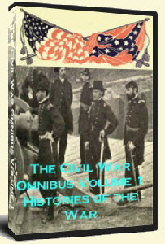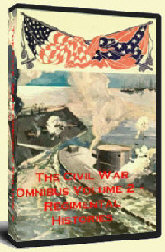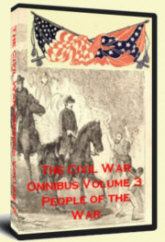Kearny the Magnificent
Despite the fact that he met his fate early in the war, the Union produced few officers as colorful as General Philip Kearny.
Born in 1815 of wealthy New York stock, Kearny was raised by his grandfather after his parents perished while he was still a child. His grandfather insisted that a reluctant Kearny study law; Kearny followed his grandfather’s wishes, graduating from Columbia College with a degree in law in 1833, but Kearny’s law career was short lived.
His grandfather died in 1836, leaving the young Kearny a millionaire. Kearny then chose a military career, the following year obtaining a commission as a second lieutenant of cavalry in the 1st U.S. Dragoons, under the command of his uncle, Colonel Stephen W. Kearny, and adjutant general was Jefferson Davis.
In 1839, Kearny traveled to France, where he studied cavalry tactics in Saumur, then with the Chausseurs d’Afrique in the Algiers. Kearny adopted the Chausser style of riding into battle with a sword in his right hand, a pistol in his left hand, and his reins in his teeth. His French comrades were impressed, and gave him the nickname “Kearny le Magnifique.”
Kearny returned to the U.S. in 1840, eventually becoming aide-de-camp to General Winfield Scott, and accompanying the 1st U.S. Dragoons on an expedition to the Oregon Trail in 1845.
However, by 1846, disappointed in the lack of action he was seeing the Army, Kearny resigned. He was back within a month, when the Mexican-American War began. Kearny was given the assignment of raising a cavalry troop for his 1st U.S. Dragoons, and did so in style, outfitting his 120 men with 120 matched dappled gray horses at his own expense.
Kearny became a hero in Mexico, but after the war’s conclusion, Kearny resigned again, impatient with the Army’s promotion process. He embarked on an international tour, visiting China and Ceylon before ending up in France, where, despite the fact that he was married, he fell in love with fellow New Yorker Agnes Maxwell. The two set tongues wagging when they moved in together in 1854, even though Kearny was still married to his first wife. He finally received a divorce from his first wife in 1858, and he and Agnes returned to Paris to be married.
Kearny rejoined the Chausseurs in France, losing his arm to amputation after being injured by grapeshot, and earning the French Legion of Honor. He returned to the U.S. upon the outbreak of the Civil War. Although the U.S. Army was reluctant at first to restore Kearny, due to his disability, he nevertheless received command of the 3rd Division of the III Corps.
His bravery – or bravado – obvious, Kearney soon became a favorite of his men, shouting as he led them such memorable lines as, “I’m a one-armed Jersey son-of-a-gun, follow me!” and “don’t worry, men, they’ll all be firing at me!”
Kearny soon fell out with the much more conservative General George McClellan, often ignoring the General’s orders. When ordered by McClellan to retreat at the Battle of Malvern Hill, Kearny responded thus:
I, Philip Kearny, an old soldier, enter my solemn protest against this order for retreat. We ought instead of retreating should follow up the enemy and take Richmond. And in full view of all responsible for such declaration, I say to you all, such an order can only be prompted by cowardice or treason.
By the time of the Second Battle of Bull Run, Kearny was now a major general. After the Union army’s defeat at the Second Bull Run, the retreating Federal troops met up with Confederates at the Battle of Chantilly on September 1, 1862, a terrible battle marked by thunder, lightning, and heavy rains. Kearny, disregarding warnings not to do so, investigated a gap in the Union line, declaring that “the Rebel bullet that can kill me has not yet been molded.” Riding into a Confederate unit, ignoring their demands to surrender, Kearny suffered a bullet to the spine, which killed him instantly.
When Confederate Major General A.P. Hill, found the body of Kearny, he was said to exclaim, “he deserved a better fate than to die in the mud.” Kearny’s body was returned to the Union, bearing a personal note from General Robert E. Lee. The man who’d famous stated that “I can make men follow me to hell,” had found his Confederate bullet, and the admiration of Union and Confederates alike.


